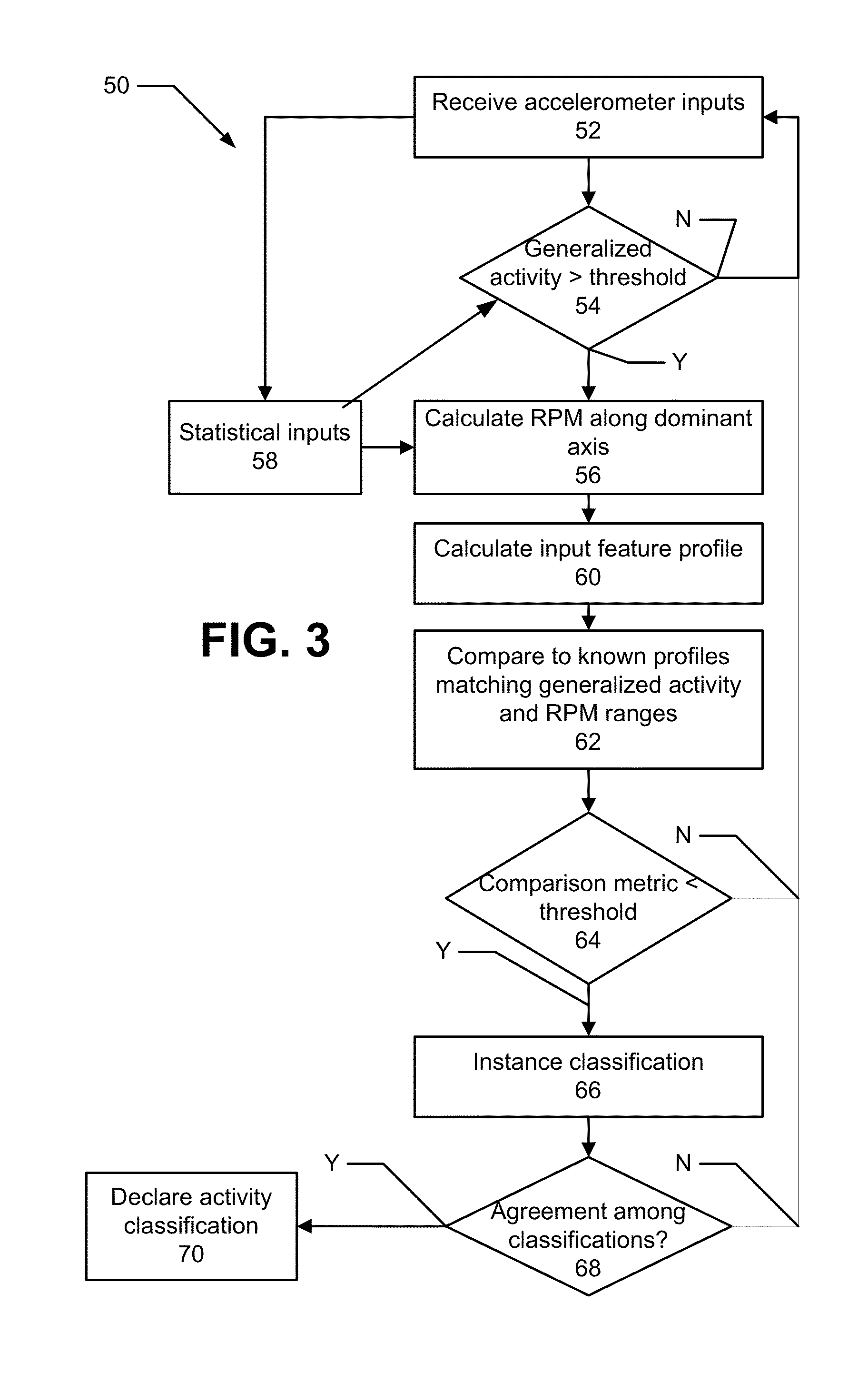Efficient activity classification from motion inputs
a technology of activity classification and motion input, which is applied in the field of efficient activity classification from motion input, can solve the problems of complex processing of information from these sources, and achieve the effect of avoiding floating point computation, minimizing memory footprint, and saving power
- Summary
- Abstract
- Description
- Claims
- Application Information
AI Technical Summary
Benefits of technology
Problems solved by technology
Method used
Image
Examples
Embodiment Construction
[0018]As introduced above, a small form factor device (e.g., a watch) (hereinafter, referred to as a “device” for clarity) can be worn by a person. The device includes a multi-axis accelerometer. The accelerometer produces outputs that are processed according to aspects disclosed herein. As will be explained in further detail below, there is disclosed an approach to categorizing an activity being performed by a person wearing the device in which power and memory constraints are observed. Here, “worn” can include any mechanism for attaching the device, such that motion of the person results in motion of the device. In one approach, power consumption and memory requirements are minimized, according to specific techniques. Example techniques include constant time computation, which, in an approach, includes that data structures used during activity classification can be maintained and updated one sample at a time, in constant time per sample. In such approach, retaining raw sample data...
PUM
 Login to View More
Login to View More Abstract
Description
Claims
Application Information
 Login to View More
Login to View More - R&D
- Intellectual Property
- Life Sciences
- Materials
- Tech Scout
- Unparalleled Data Quality
- Higher Quality Content
- 60% Fewer Hallucinations
Browse by: Latest US Patents, China's latest patents, Technical Efficacy Thesaurus, Application Domain, Technology Topic, Popular Technical Reports.
© 2025 PatSnap. All rights reserved.Legal|Privacy policy|Modern Slavery Act Transparency Statement|Sitemap|About US| Contact US: help@patsnap.com



